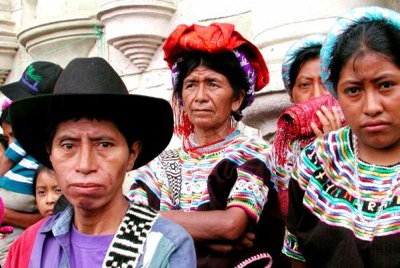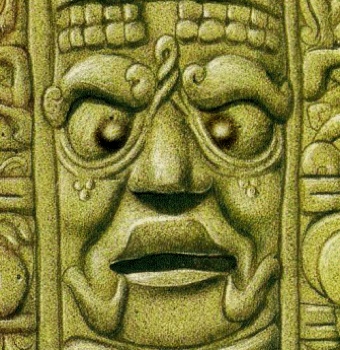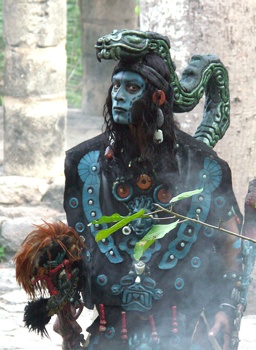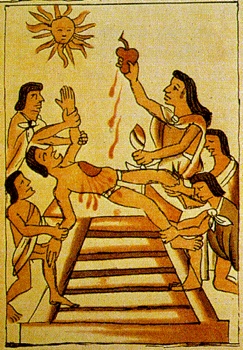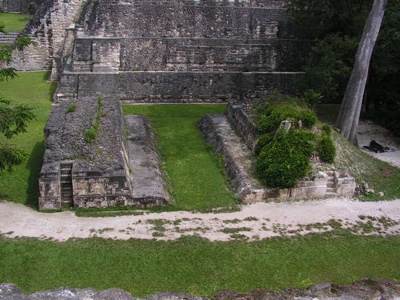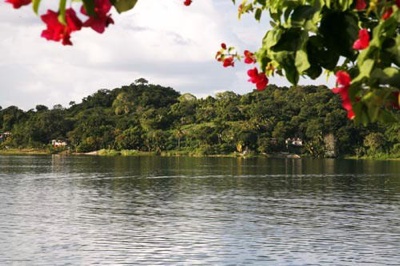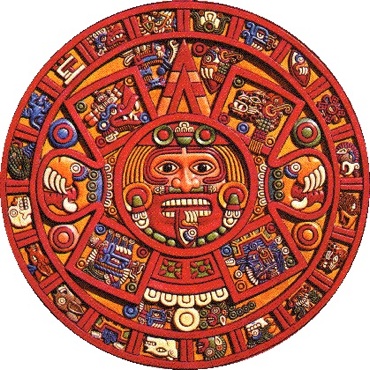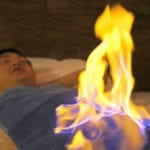 Books
Books  Books
Books  Weird Stuff
Weird Stuff 10 Scientists Who Enabled Brains to Survive Bodily Death
 Politics
Politics 10 “Unchangeable” U.S. Legal Doctrines That Were Overturned
 Travel
Travel 10 Modern Cities That Are Actually Built on Ancient Ruins
 Sport
Sport 10 Formerly Controversial Olympic Sports That Became Mainstream
 History
History 10 Brave Royals Killed in Battle
 History
History 10 Infamous Con Men from History You Should Know About
 Mysteries
Mysteries 10 Reasons the Titanic Sank Besides the Iceberg
 Weird Stuff
Weird Stuff 10 Outrageous Vehicles and Eccentric Drivers
 Movies and TV
Movies and TV 10 Filmmakers Who Attacked Their Audience
 Books
Books 10 Surprisingly Dark Moments in Seemingly Benign Books
 Weird Stuff
Weird Stuff 10 Scientists Who Enabled Brains to Survive Bodily Death
 Politics
Politics 10 “Unchangeable” U.S. Legal Doctrines That Were Overturned
Who's Behind Listverse?

Jamie Frater
Head Editor
Jamie founded Listverse due to an insatiable desire to share fascinating, obscure, and bizarre facts. He has been a guest speaker on numerous national radio and television stations and is a five time published author.
More About Us Travel
Travel 10 Modern Cities That Are Actually Built on Ancient Ruins
 Sport
Sport 10 Formerly Controversial Olympic Sports That Became Mainstream
 History
History 10 Brave Royals Killed in Battle
 History
History 10 Infamous Con Men from History You Should Know About
 Mysteries
Mysteries 10 Reasons the Titanic Sank Besides the Iceberg
 Weird Stuff
Weird Stuff 10 Outrageous Vehicles and Eccentric Drivers
 Movies and TV
Movies and TV 10 Filmmakers Who Attacked Their Audience
Top 10 Fascinating Facts About The Mayans
The Maya is a Mesoamerican civilization, noted for the only known fully developed written language of the pre-Columbian Americas, as well as its art, architecture, and mathematical and astronomical systems. Many misconceptions about the mayans exist, and this list should put an end to at least one or two of them. In addition, it will introduce you to facts that you never knew about this great ancient civilization.
The Fact: There are numerous Mayans still living in their home regions
In fact, there are over seven million Mayans living in their home regions, many of whom have managed to maintain substantial remnants of their ancient cultural heritage. Some are quite integrated into the modern cultures of the nations in which they reside, while others continue a more traditional culturally distinct life, often speaking one of the Mayan languages as a primary language. The largest populations of contemporary Maya inhabit the Mexican states of Yucatán, Campeche, Quintana Roo, Tabasco, and Chiapas, and in the Central American countries of Belize, Guatemala, and the western portions of Honduras and El Salvador. Just as a point of interest, it is very possible that the word “shark” comes to us from the Mayan languages, as does the word “cocoa”. To say “thank you” in Yucatec Maya, you say “Jach Dyos b’o’otik.”
The Fact: The Mayans “enhanced” the beauty of their children
The Maya desired some unnatural physical characteristics for their children. For instance, at a very young age boards were pressed on babies’ foreheads to create a flattened surface. This process was widespread among the upper class. Another practice was to cross babies’ eyes. To do this, objects were dangled in front of a newborn’s eyes, until the newborn’s eyes were completely and permanently crossed. Another interesting fact about Mayan children is that most were named according to the day they were born. Every day of the year had a specific name for both boys and girls and parents were expected to follow that practice.
The Fact: The Mayans had many excellent medical practices
Health and medicine among the ancient Maya was a complex blend of mind, body, religion, ritual, and science. Important to all, medicine was practiced only by a select few who were given an excellent education. These men, called shamans, act as a medium between the physical world and spirit world. They practice sorcery for the purpose of healing, foresight, and control over natural events. Since medicine was so closely related to religion and sorcery, it was essential that Maya shamans had vast medical knowledge and skill. It is known that the Maya sutured wounds with human hair, reduced fractures, and were even skilled dental surgeons, making prostheses from jade and turquoise and filling teeth with iron pyrite.
The Fact: Some Mayans still practice blood sacrifice
It is a rather well known fact that the Mayans practiced human sacrifice for religious and medical reasons – but what most people don’t know is that many Mayans still practice blood sacrifice. But don’t get too excited – chicken blood has now replaced human blood. Today the Maya keep many of the ritualistic traditions of their ancestors. Elements of prayer, offerings, blood sacrifice (replacing human blood with that of sacrificed chickens), burning of copal incense, dancing, feasting, and ritual drinking continue in traditional ceremonies.
The Fact: The Mayans used painkillers
The Mayan peoples regularly used hallucinogenic drugs (taken from the natural world) in their religious rituals, but they also used them in day to day life as painkillers. Flora such as peyote, the morning glory, certain mushrooms, tobacco, and plants used to make alcoholic substances, were commonly used. In addition, as depicted in Maya pottery and carvings, ritual enemas were used for a more rapid absorption and effect of the substance. Above is a statue of a Mayan enjoying their enema.
The Fact: The Mayans built ball courts so they could play games
The Mesoamerican ballgame was a sport with ritual associations played for over 3000 years by the pre-Columbian peoples of Mesoamerica. The sport had different versions in different places during the millennia, and a modern version of the game, ulama, is still played in a few places by the local indigenous population. Ballcourts were public spaces used for a variety of elite cultural events and ritual activities like musical performances and festivals, and of course, the ballgame. Enclosed on two sides by stepped ramps that led to ceremonial platforms or small temples, the ball court itself was of a capital “I” shape and could be found in all but the smallest of Maya cities. In Classic Maya, the ballgame was called pitz, and the action of play was ti pitziil. The game was played with a ball roughly the size of a volleyball but made from rubber and heavier. Decapitation is particularly associated with the ballgame – severed heads are featured in much Late Classic ballgame art. There has even been speculation that the heads and skulls were used as balls.
The Fact: The Mayans used saunas
An important purification element to the ancient Maya was the sweat bath, or zumpul-ché. Similar to a modern day sauna, sweat baths were constructed of stone walls and ceilings, with a small opening in the top of the ceiling. Water poured onto the hot rocks in the room created steam, offering a setting in which to sweat out impurities. Sweat baths were used for a range of conditions and situations. New mothers who had recently conceived a child would seek revitalization in them, while individuals who were sick could find healing power in sweating. Maya kings made a habit out of visiting the sweat baths as well because it left them feeling refreshed and, as they believed, cleaner.
The Fact: The last Maya state existed until 1697
The island city of Tayasal was the last independent Mayan kingdom and some Spanish priests peacefully visited and preached to the last Itza king, Canek, as late as 1696. The Itza kingdom finally submitted to Spanish rule on March 13, 1697, to a force led by Martín de Ursua, governor of Yucatán. The famous archeological site and home to the beautiful monuments we are all familiar with was in Chichen Itza, located in this last independent region. Interestingly, much of the land under the monuments is privately owned by one family, whilst the government owns and administers the monuments themselves.
The Fact: The Mayan Calendar does not predict the end of the world in 2012
First of all, the Mayans don’t have a calender they have calendars which often interlocked. The calender that has given rise to the myth of the end of the world is the Mayan long count calendar. According to Mayan Mythology, we are living in the fourth world or “creation” so to speak. The last creation ended on 12.19.19.17.19 of the long count calendar. That sequence will occur again on December 20, 2012. According to the Mayans this is a time of great celebration for having reached the end of a creation cycle. It does not mean the end of the world but the beginning of a new “age”. Does the world end every December 31st? No – we go on to a new year. This is the same as the Mayan creation periods. In fact, the Mayans make many references to dates that fall beyond 2012. The idea of 2012 being the end of the world was actually first suggested by New Age religionist José Argüelles in his 1987 book The Mayan Factor: Path Beyond Technology.
The Fact: No one really knows what caused the collapse of the Mayan culture
For reasons that are still debated, the Maya centers of the southern lowlands went into decline during the 8th and 9th centuries and were abandoned shortly thereafter. This decline was coupled with a cessation of monumental inscriptions and large-scale architectural construction. Non-ecological theories of Maya decline are divided into several subcategories, such as overpopulation, foreign invasion, peasant revolt, and the collapse of key trade routes. Ecological hypotheses include environmental disaster, epidemic disease, and climate change. There is evidence that the Maya population exceeded carrying capacity of the environment including exhaustion of agricultural potential and over-hunting of megafauna. Some scholars have recently theorized that an intense 200 year drought led to the collapse of Maya civilization.
